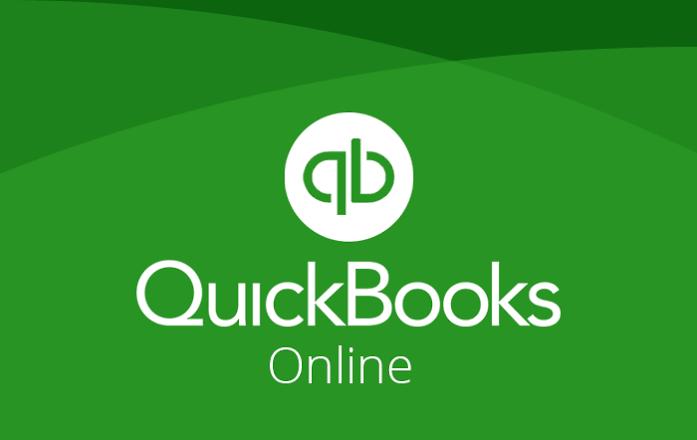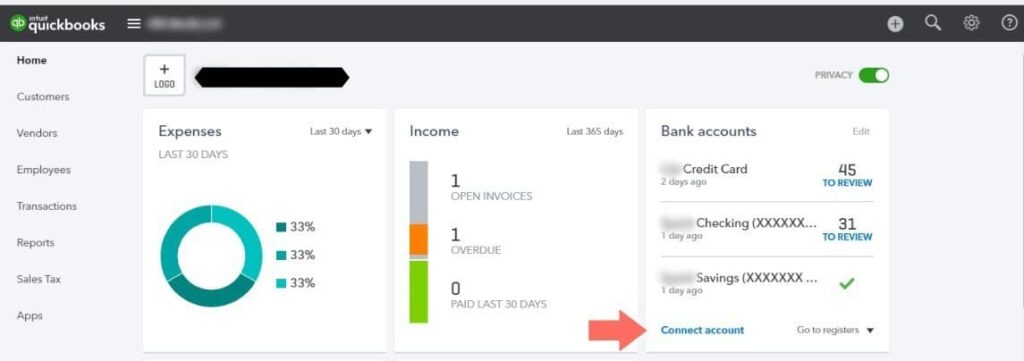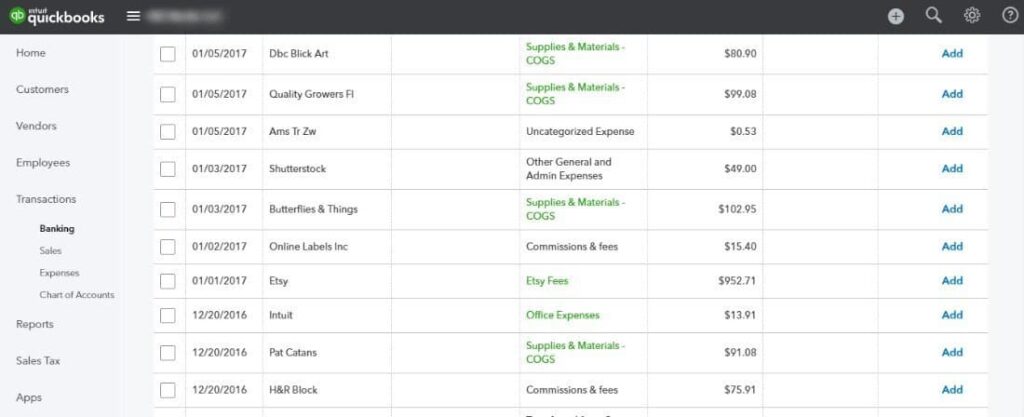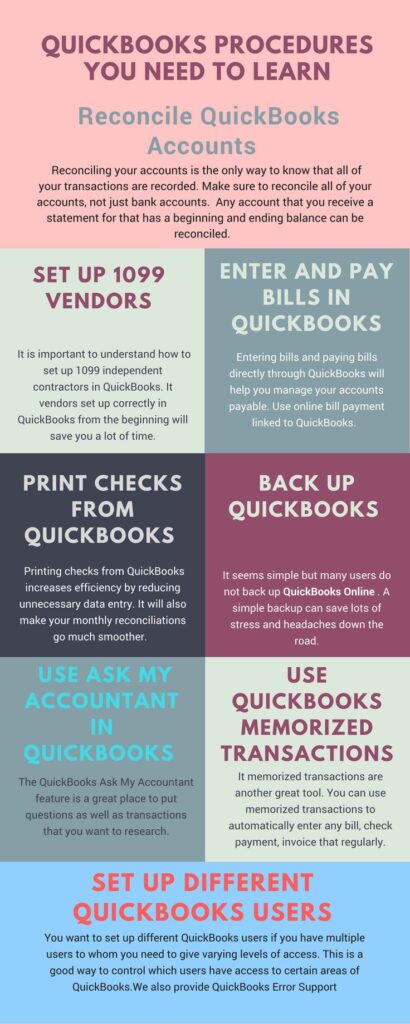In the business environment, efficient and accurate accounting is crucial for the success of any small business. Manual record-keeping can be time-consuming, prone to errors, and difficult to analyze. That’s where accounting software like QuickBooks comes in. It’s not enough to have it, but you need to know how to use QuickBooks for small business accounting for maximum results.
QuickBooks is a powerful tool that can streamline your accounting processes, provide valuable insights into your financial health, and help you make informed business decisions.
In this article, we’ll guide you through the basics of using QuickBooks for small business accounting.
Key Takeaways
- There are so many free accounting softwares that are available for small business owners but their limitations paves a way for a software like QuickBooks.
- If you want to start using QuickBooks for your small business, it’s recommended that you start with QuickBooks Online.
What is QuickBooks?
QuickBooks is a popular software that helps small businesses with their accounting. There are so many free accounting softwares that are available for small business owners but their limitations paves a way for a software like QuickBooks. Though not free, but it provides unlimited features for business owners who want to explore all options they can get for their small business finance.
QuickBooks has so many benefits to it. It can automate many of your accounting tasks, saving you time and effort, help you avoid errors in your accounting records, provide you with valuable insights into your financial performance, helping you make informed business decisions and helps you stay organized and on top of your finances.

If you want to start using QuickBooks for your small business, it’s recommended that you start with QuickBooks Online. It has everything you need to keep your small business accounts in order. If your business grows, you can easily upgrade to a bigger QuickBooks plan. You won’t lose any of your old records.
Do not start with QuickBooks Self-Employed if you are just starting out your business. It is missing some important things you need and does not save you much money either.
Related article: 10 Best Free Accounting software for small business owners
How to use QuickBooks for small business accounting: Get Started with QuickBooks Online
So, you have just signed up on QuickBooks online and you want to start your business accounting experience. Follow this guidelines to make the most out this software for your business finance.
Here is how to get started with QuickBooks online:
- Connect your Financial Accounts.
- Create Custom Account Names.
- Code your Transactions.
1. Connect your Financial Accounts
After signing up for QuickBooks Simple Start, connect your bank and credit card accounts. This will automatically bring in your transactions, so you don’t have to type them in. You can also bring in transactions from the past 90 days. Choose a good starting date for your bookkeeping before you bring in transactions.
On your QuickBooks Dashboard, go to Business Overview. On the right side, click the “Connect Account” button (the big pink one). Watch this video for help.

After you click the button, you’ll see a screen for linking your financial account. Type in the name of your bank or credit card company. You’ll be asked to enter your login details. If you can, import data from as far back as you need.
Do this for all your business bank accounts, including checking accounts, credit cards, or PayPal accounts. QuickBooks will start bringing in transactions from these accounts. Go to the Banking page, and click on one of your financial accounts. You’ll see a bank feed that looks like the one in the image below:

2. Create Custom Account Names
In accounting, each transaction has two parts. This is called Double Entry Accounting. We know one part: the bank or credit card account. You need to choose another account for the other part. This is usually a revenue or expense account. This “coding.”
QuickBooks has pre-made revenue and expense accounts you can use, or you can create your own. These accounts together make up your Chart of Accounts. When you categorize transactions into different accounts, these categories and account names will be used to create your financial statements.
In QuickBooks, accounts are also called categories. The goal of bookkeeping is to have financial data that helps you make decisions for your business. This data should be meaningful to you and presented in a way that helps you make decisions. If your business has different areas, you might want to see these areas separately in your financial statements. For example, instead of having one general “Office Expenses” account, you could create accounts like “Etsy – graphic design” and “Blog – graphic design.”
Don’t overdo it, create accounts that make sense to you. Similarly, instead of one “Revenue” account, you could have “Etsy Sales,” “Blog Affiliate,” “Blog Advertising,” etc. Structure and name your accounts in a way that is meaningful to you.
You can create your own account names in two ways. If you want to set up your own account names from the beginning, you do that in your Chart of Accounts. You can find your Chart of Accounts by clicking the gear icon in the top right corner.

3. Code your Transactions
Remember we said that creating a revenue or expense account is called coding. One great thing about QuickBooks is that it learns from your coding and remembers where to put future transactions from the same vendor. In the list of transactions, you’ll see some accounts in green. These are accounts that QuickBooks remembers from the last time you coded a vendor expense. If this is still the right account, click “Add” and the transaction will be done.
It will be properly coded and disappear from the screen. This screen holds transactions that still need to be coded. Some accounts have gray names. This is QuickBooks’s suggestion, but it might not be right. This could be the first time you’ve bought from this vendor, so QuickBooks is making a guess. If you like their suggestion, click “Add.”
Sometimes you won’t like their suggestion. Click on the transaction to edit the account. Click on the drop-down to select the account you want to code the transaction to. If the account does not exist before, create a new account with your desired name.

When you create a new Expense account, make sure its Category Type is “Expense.” Don’t worry too much about the Detail Type, just choose what seems right. Double-check the account name before saving. Once you have the right account (either from the list or a new one you created), don’t forget to choose or add a Vendor name.
This will make finding and editing transactions later much easier. With the right vendor name and account, click “ADD.” Go through all your transactions and code them. Do this for all your financial accounts. Coding revenue accounts is the same. You will notice there are two columns for dollars in each register.
The left is for money spent (expenses), and the right is for money received (income). Code your income in the right-hand column, just like you would expenses, but choose income accounts from your Chart of Accounts.
As you code each transaction, you’re creating financial reports. You can see these reports by going to “Reports” on the left menu. The most common ones are the Balance Sheet and Profit & Loss Report.
With this guideline, you can confidently start recording your business transactions using QuickBooks.
5 Essential Things to do in QuickBooks as a Beginner

Before you start entering your expenses in QuickBooks, make sure you do these 5 important things first.
Create a Directors’ loan account
If you use your personal debit or credit card for business expenses, make sure to show “Directors Loan” as the Payment Account when you enter an expense. This lets you withdraw money from your business bank account.
If “Directors Loan” isn’t on the list, click “Payment Account” and select “Add New.” Choose “credit card” and type “Directors Loan” in the Name section. Then, save it.
Transfer expenses
After you’ve entered your expenses and want to withdraw money to your personal account, go to your homepage and click “+New” > “Other” > “Transfer.” Choose your business bank account or current account as the source of the funds. Then, select “Directors Loan” as the destination.
Enter the amount you want to transfer (usually the balance shown on the right). Choose the transfer date and click “save and close.” Now, log into your business bank account and transfer the money to your personal account.
Subsistence
Categorize all your food and drink expenses under “Subsistence.” This makes it easier to track these costs in your reports and eliminates the need to enter individual shop names for each transaction. If “Subsistence” isn’t already listed as a payee, add it. Additionally, if you’re using your personal debit or credit card, follow the instructions from creating a director’s loan account.
Mileage
Follow the same process as in Step 2 for your mileage. Add “Mileage” as a payee if it’s not already listed, and then save it. This will allow you to easily track your mileage expenses.
Payroll expenses
After you have run payroll and paid employees using your business bank account, if your bank account is connected to QuickBooks, you’ll see the transaction appear in your feed. However, it might not always be placed in the correct category.In the “category or match” section of the Banking feed, make sure to select “Payroll Clearing.”
Choosing a different category can mess up your books and add an extra expense that you’ve already accounted for during payroll.
Reconcile
The last important thing to do in QuickBooks Online is to reconcile your accounts once a month. This helps you stay on top of your bookkeeping and makes it easier to find any mistakes.
Conclusion
By following these steps and tips, you can effectively use QuickBooks Online to manage your small business’s accounting. Remember to connect your bank accounts, categorize transactions accurately, reconcile your accounts regularly, and take advantage of QuickBooks’s features like invoicing and reporting.
With consistent use and understanding, QuickBooks can become a valuable tool for streamlining your financial operations and making informed business decisions.
Hope this guide was helpful? If you enjoyed reading this article, don’t hesitate to comment below.
FAQs
How do I create a new customer or vendor in QuickBooks Online?
To create a new customer or vendor, navigate to the Customers or Vendors tab, respectively. Click on the “New” button and enter the necessary information, such as the company or individual’s name, contact details, and payment terms.
How can I run a profit and loss report in QuickBooks?
To run a profit and loss report, go to the Reports menu and select “Profit & Loss.” You can customize the report to show specific time periods, income and expense categories, and other details.
What is the difference between a journal entry and a bank transaction in QuickBooks?
A journal entry is a manual record of a financial transaction, while a bank transaction is automatically imported from your connected bank account. Journal entries are often used for non-bank transactions, such as adjusting entries or accruals.


